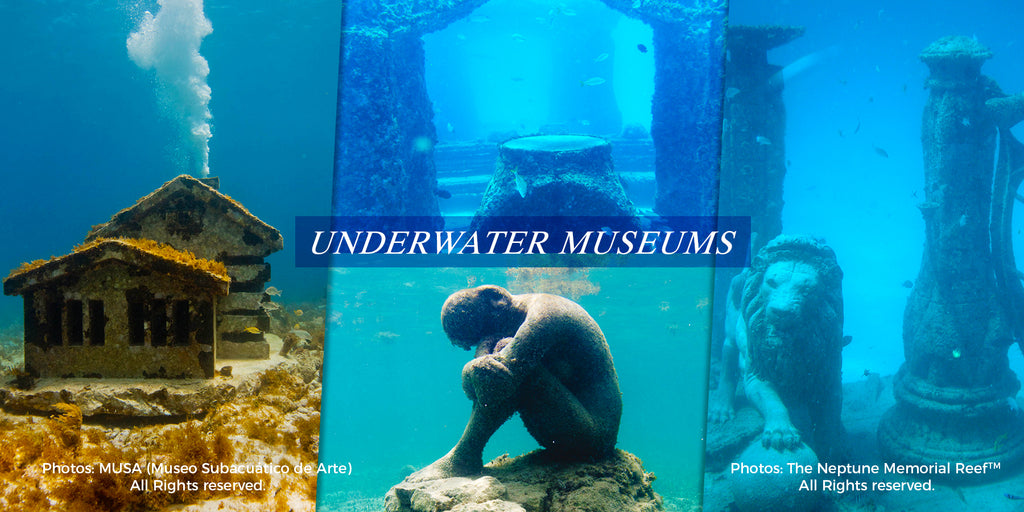Underwater Museums

Photos: MUSA (Museo Subacuático de Arte) & The Neptune Memorial Reef. All Rights reserved.
Shifting tides and crashing waves hide more than just aquatic flora and fauna these days. Whether built for art, ecology or memorial, the sea plays host to more than a few special sights reserved for those willing to strap on some fins and do a little exploring.
Perhaps the most well-known are those created by Jason deCaires Taylor. His works include the “Museo Subacuatico de Arte” in the waters of Cancun, Isla Mujeres and Punta Nizuc; “Grenada Underwater Sculpture Park” within Moliniere Bay on the west coast of Grenada; and the “Museo Atlantico” off the coast of Lanzarote, in the Spanish Canary Islands. In just these three locations, nearly 1000 sculptures sit along the sea floor at depths ranging from 15-30 feet, perfect for snorkeling.
Many of the pieces are meant to represent something about society or the relationship between man and nature. For instance, the installation called “The Human Gyre”, in “Museo Atlantico”, symbolizes the circular flow of life – the water cycle and our dependence on oceans for food and oxygen.
Other artists and conservationists have placed sculptures to act as artificial reefs, but the largest single structure is found in Key Biscayne, near Miami, Florida. Just a few miles off the eastern shore, you can find the Neptune Memorial Reef. 40 feet below the surface, the memorial takes up an astonishing 600,000 square feet of ocean floor.
The Neptune Memorial Reef stands not only as an artificial reef to provide a home for sea life, but, as the name suggests, also acts as a memorial for those who have been lost at sea. Some pieces of the reef even showcase memorial plaques and families frequently visit to pay respects. But not all is sullen and morbid, because after the construction of the reef, the observable sea life has increased substantially in the area.
Not all underwater parks and sculptures are intentionally placed, however. Near Naples, you can dive amongst the ruins of Baia, a Roman city that was abandoned in the 8th century. Once a bustling city center, frequented by emperors of days long past, the city now sits partially underwater, with some very well-preserved structures and sculptures throughout the ruins.
Similarly, Herod’s Harbor can be found under 20 feet of water near the coast of Caesarea in Israel. The city was named in honor of Caesar Augustus. While a modern harbor sits in much the same place, an underwater museum was opened in 2006, allowing divers to see dozens of ruinous sites beneath the waves. A small portion of the museum is also accessible by snorkeling.
Whether you’re a history buff or an aspiring art critic, the ocean holds an array of opportunity. While many people learn to SCUBA dive in order to see aquatic life, there is much more to behold once we learn where to go.
- Watersports Staff






Comments 0